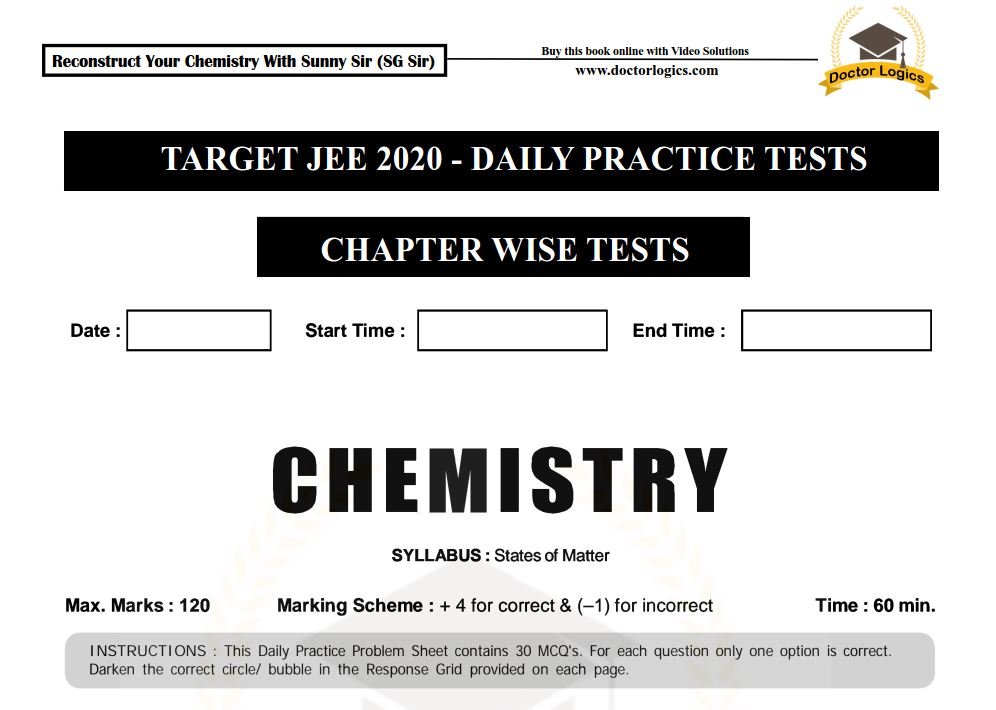ratings
In this video course, we will discuss some interesting numericals on various topics of gaseous state like ideal gas equation, gas laws which include Boyle's law, graham's law, gay lussac's law, Avogadro's law, dalton's law of partial pressure, graham's law of diffusion and effusion, root mean square velocity, average velocity, mot probable speed, kinetic theory of gases, inversion temperature
Unlimited Duration
September 11, 2020
5
EXPIRED
We will discuss following questions from Class 11 Chapter States Of Matter
1. Which of the following volume-temperature (V−I) plots represents the behaviour of 1mole of an ideal gas at the atmospheric pressure?
2. The volume-temperature graphs of a given mass of an ideal gas at constant pressure are shown below. What is the correct order of pressure ?
3. van der Waals constants a and b for hydrogen are 0.246 liter2mo1−2 and 0.0267 litre mo1−1 respectively Calculate inversion temperature and Boyle's temperature of H2 gas .
4. The temperature of the gas is raised from 27∘C to 927∘C, the root mean square velocity is
5. Equal masses of methane and oxygen are mixed in an empty container at `25 C`. The fraction of the total pressure exerted by oxygen is:
6. The ratio between the root mean square speed of H2 at 50K and that of O2 at 800K is
7. Calculate the total pressure in a 10 litre cylinder which contains o.4g He,1.6g oxygen and 1.4g nitrogen at 270C. Also calculate the partial pressure of He gas in the cylinder. Assume ideal behavious for gases :
8. A bottle of dry ammonia and a bottle of dry hydrogen chloride connected through a long tube are opened simultaneously at both ends, the white ammonium chloride ring first formed will be:
9. The rms velocities of CO2 at a temperature T (in Kelvin) is x cm/sec. At what temperature (in Kelvin) the rms velocity of nitrous oxide would be 4x cm/sec :
10. A mixture of two gases A and B in the mole ratio 2:3 is kept in a 2 litres vessel. A second 3 litres vessel has the same gases in the mole ratio 3:5. Both gas mixtures have the same temperature and same total pressure. They are allowed to intermix and the final temperature and total pressure are the same as the initial values, the final volume being 5 litres. Given that the molar masses are MA and MB then what is the mean molar mass of the final mixture?
11. At constant volume and temperature conditions, the rates of diffusion rA and rB of gases A and B having densities ρA and ρB are related by the expression:
12. For one mole of a vander waal's gas, when b-0 and T=300 K, the PV VsV1 plot is shown below. the vander waal's constant a (atm.Litre2mol−2) is-
and many more
Studens
About Instructor
More Courses by Insturctor
Course Currilcum
- Lecture 1 FREE 00:00:00
- Lecture 2 FREE 00:00:00

